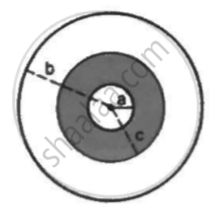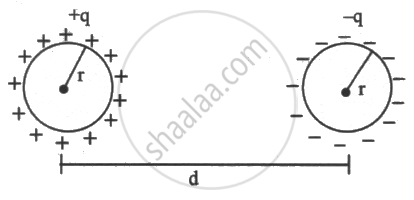Advertisements
Advertisements
Question
A capacitor of capacitance ‘C’ is being charged by connecting it across a dc source along with an ammeter. Will the ammeter show a momentary deflection during the process of charging? If so, how would you explain this momentary deflection and the resulting continuity of current in the circuit? Write the expression for the current inside the capacitor.
Solution
Yes, the ammeter shows a momentary deflection during the process of charging because changing electric field produce displacement current between the plates of the capacitor.
The resulting continuity of current in the circuit is because the magnitude of electric field and charge over the area of the capacitor plates is constant.
Current inside the capacitor,
`I_D = in_0 (dphi_E)/(dt)`
RELATED QUESTIONS
Define capacitor reactance. Write its S.I units.
As `C = (1/V) Q` , can you say that the capacitance C is proportional to the charge Q?
Suppose, one wishes to construct a 1⋅0 farad capacitor using circular discs. If the separation between the discs be kept at 1⋅0 mm, what would be the radius of the discs?
A sphercial capacitor is made of two conducting spherical shells of radii a and b. The space between the shells is filled with a dielectric of dielectric constant K up to a radius c as shown in figure . Calculate the capacitance.

You are provided with 8 μF capacitors. Show with the help of a diagram how you will arrange minimum number of them to get a resultant capacitance of 20 μF.
Explain in detail the effect of a dielectric placed in a parallel plate capacitor.
The positive terminal of 12 V battery is connected to the ground. Then the negative terminal will be at ______.
Two similar conducting spheres having charge+ q and -q are placed at 'd' seperation from each other in air. The radius of each ball is r and the separation between their centre is d (d >> r). Calculate the capacitance of the two ball system ______.

Two plates A and B of a parallel plate capacitor are arranged in such a way, that the area of each plate is S = 5 × 10-3 m 2 and distance between them is d = 8.85 mm. Plate A has a positive charge q1 = 10-10 C and Plate B has charge q2 = + 2 × 10-10 C. Then the charge induced on the plate B due to the plate A be - (....... × 10-11 )C

